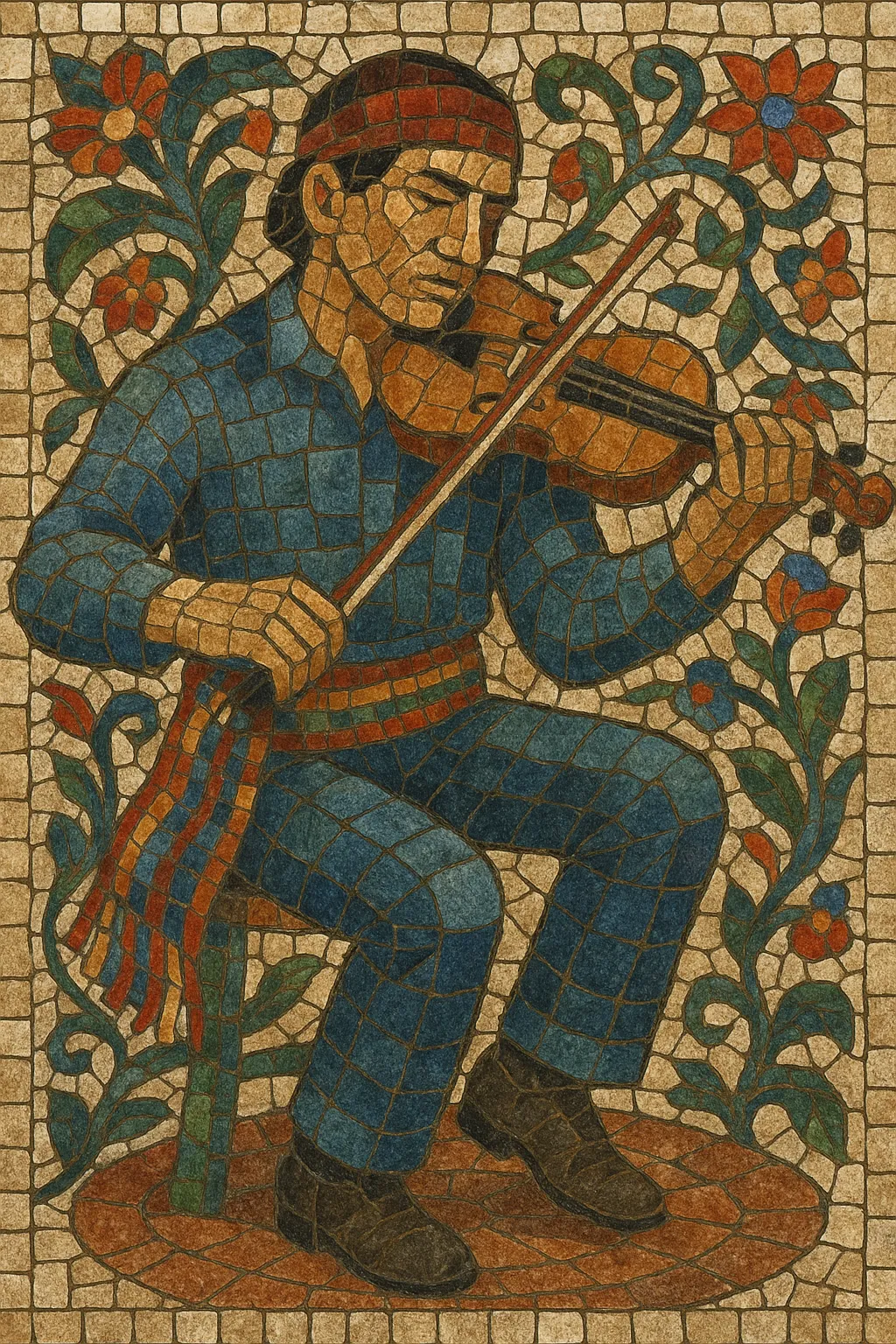Métis fiddling is a hybrid fiddle tradition developed by the Métis people of the Canadian Prairies. It blends French-Canadian, Scottish, and Irish dance-tune repertories with Indigenous rhythmic sensibilities and social dance practices.
The style is renowned for its driving pulse, “crooked” or irregular phrase structures, and percussive foot-tapping used as a built-in rhythm section. Reels, jigs, polkas, and waltzes dominate the repertoire, with the Red River Jig serving as a cultural touchstone and community anthem. Ornamented bowing, drones, and double-stops create a bright, rustic timbre well-suited to lively social dances and community gatherings.
Métis fiddling took shape in the early 19th century in the Red River region (present-day Manitoba) during the fur-trade era. French-Canadian voyageurs, Scottish and Irish settlers, and First Nations communities exchanged dance tunes and social dance forms. The violin (fiddle) became a portable, expressive instrument that could lead community dances in homes and trading posts.
As these influences converged, Métis musicians adopted European reels, jigs, polkas, and waltzes but infused them with Indigenous rhythmic drive and foot percussion. “Crooked” tunes—phrases with added or missing bars—emerged as a hallmark, reflecting oral transmission and prioritizing dance feel over strict symmetry. The Red River Jig rose to symbolic prominence, anchoring the style’s identity and social function.
Throughout the 20th century, the tradition was sustained in families and local gatherings, passed down by ear rather than notation. Radio, records, and later festivals helped circulate influential players, while regional variants developed across the Prairies and into parts of the northern United States.
From the late 20th century onward, festivals, fiddle camps, and Indigenous cultural programs elevated Métis fiddling’s visibility. Master fiddlers recorded and taught the style, helping codify techniques and repertory while preserving its improvisatory feel. Today, the tradition thrives through intergenerational teaching, competitions, and collaborations, maintaining its role at the heart of Métis cultural identity.


